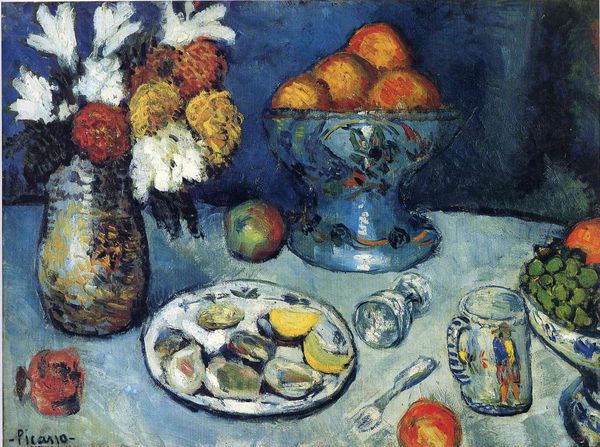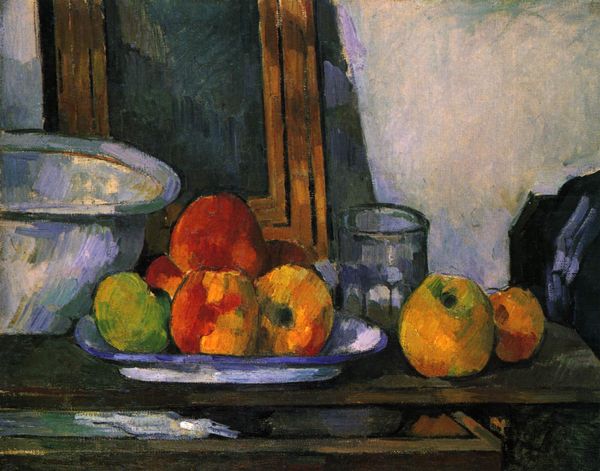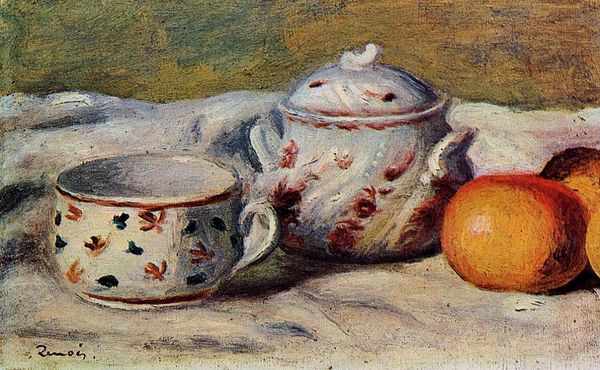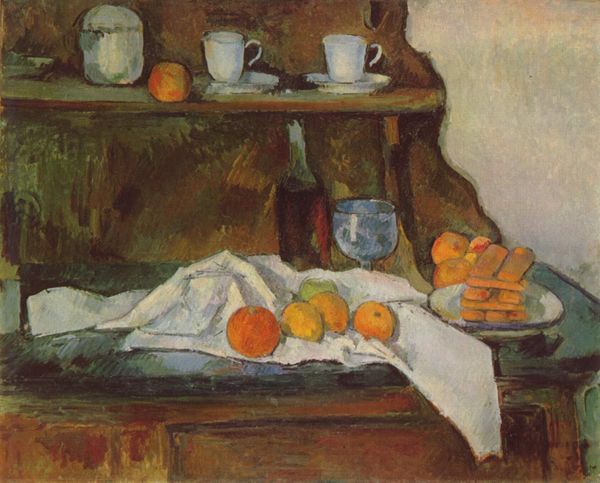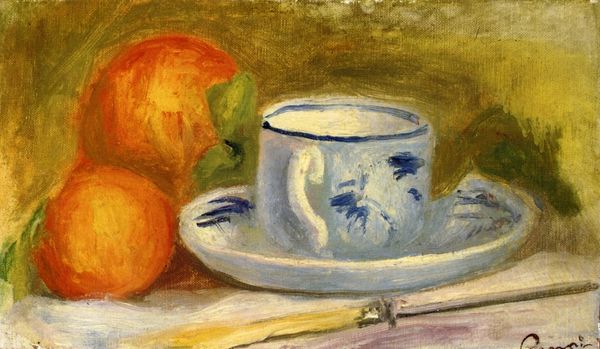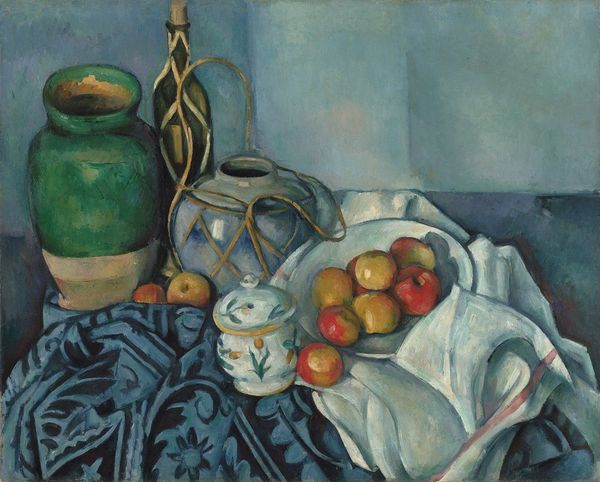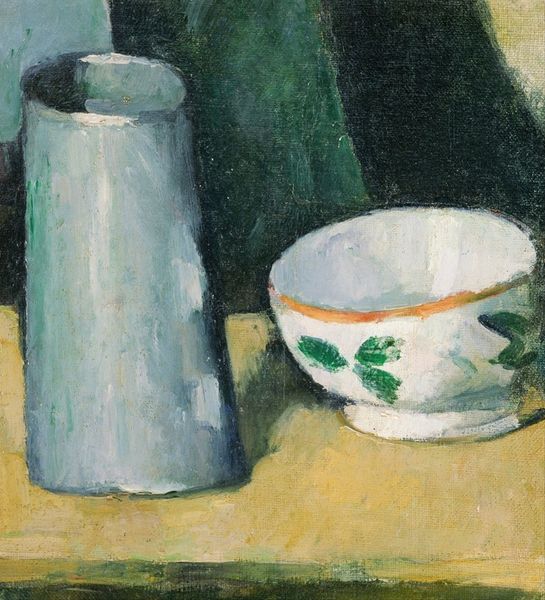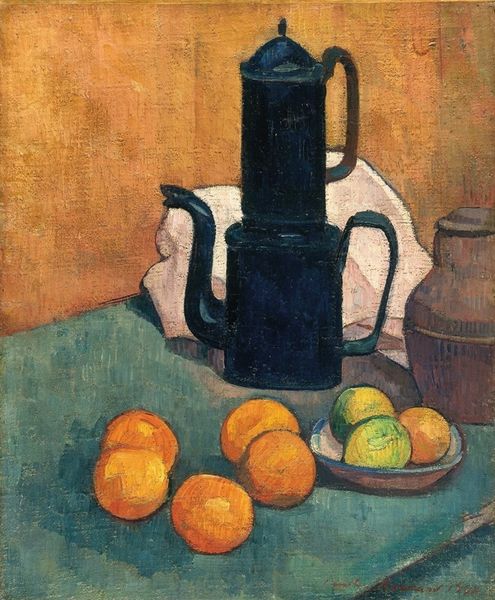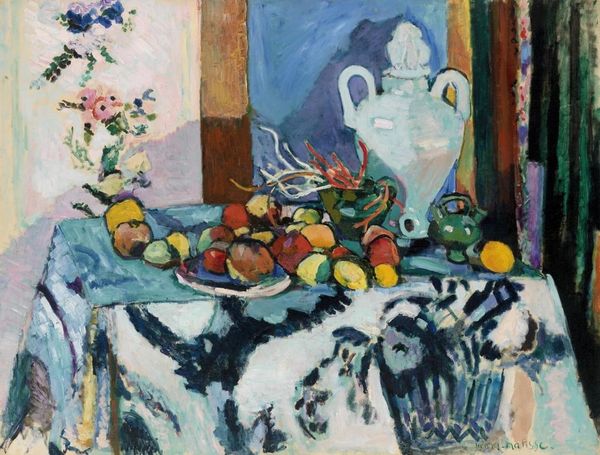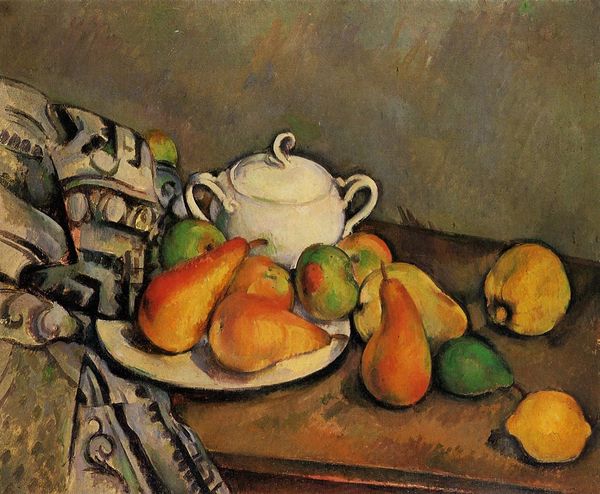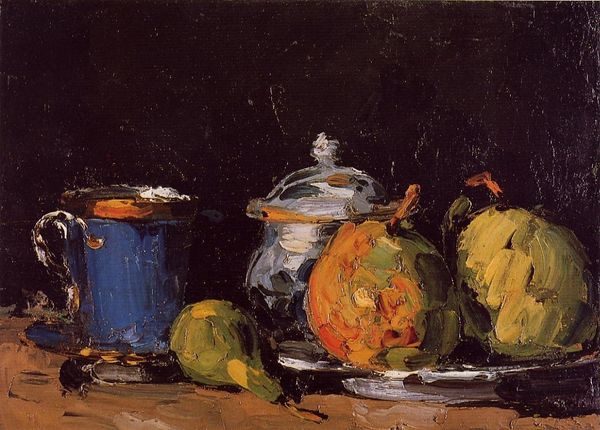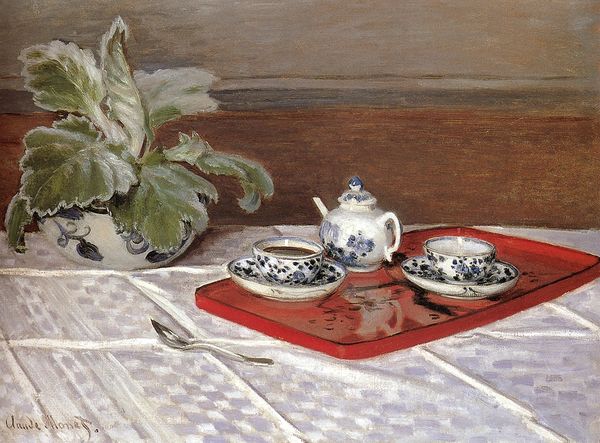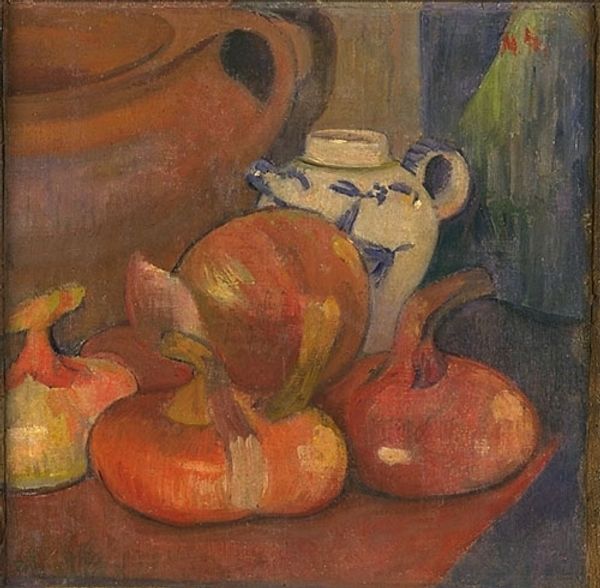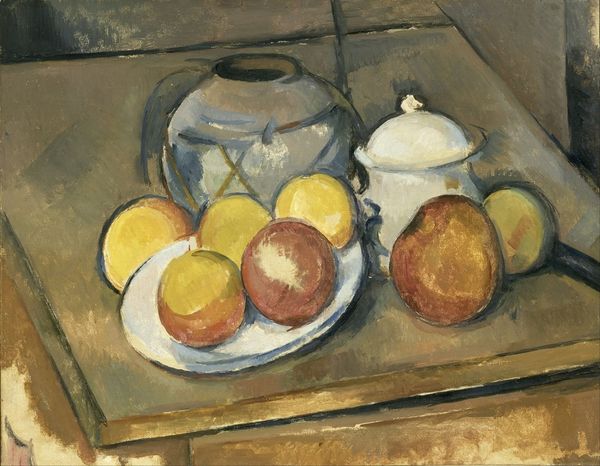
Still Life with Blue Enamel Coffeepot, Earthenware and Fruit 1888
0:00
0:00
vincentvangogh
Private Collection
painting, oil-paint, impasto
#
dutch-golden-age
#
painting
#
oil-paint
#
oil painting
#
impasto
#
post-impressionism
Dimensions: 65 x 81 cm
Copyright: Public domain
Curator: This is Vincent van Gogh's "Still Life with Blue Enamel Coffeepot, Earthenware and Fruit," painted in 1888. Editor: Oh, it has a domestic tranquility to it, don't you think? Not like some of his more tormented works. It makes me feel, I don't know, calm? Like a lazy Sunday morning. Curator: Indeed. Van Gogh painted this during his time in Arles, a period when he was exploring different themes, including still life. But that so-called domesticity hides certain commentary. This tableau offers a look into labor division, consumerism, and colonialism. Look at that coffee pot as a tool, consider that it came from an exploitive enterprise to serve bourgeois comfort. Editor: Whoa there. I thought art was just about beauty. But I see your point. Is the arrangement significant, you think? I’m wondering why Van Gogh chose these particular objects. Curator: The objects symbolize the domestic routine. The coffee pot represents that period's commodification of coffee and related class structures of consumption, while the fruit alludes to the cycle of life, decay, and regeneration. Also note, though seemingly disparate, each is from far flung locations—Japan, the Carribean, all coming together on one stage here in France. Editor: That intense impasto brings an almost tactile quality to the scene, doesn’t it? It's not just seeing; you're practically touching that rough earthenware. Does it not also bring you some hope? It has, to me, that vibrant sense of resilience that permeates van Gogh's later works. Curator: Yes, absolutely, the materiality. However, I would note it invites contemplation about its position in larger political economic concerns. Those vibrant colours and the visible brushstrokes also signify Van Gogh's move toward post-impressionism, defying academic convention in art but at a cost: ostracization from that world due to those differences. It becomes not just aesthetic but actively anti-establishmentarian. Editor: Right. So it’s all these intertwined layers of homey comforts juxtaposed to their historical consequences that he’s making apparent? Curator: Exactly. Van Gogh highlights a visual harmony of class disparity made real, with a touch of melancholic understanding. Editor: Well, that's definitely given me something to chew on—far more than those lemons, I think! Curator: Indeed. Art can offer a lens for so many things.
Comments
No comments
Be the first to comment and join the conversation on the ultimate creative platform.
